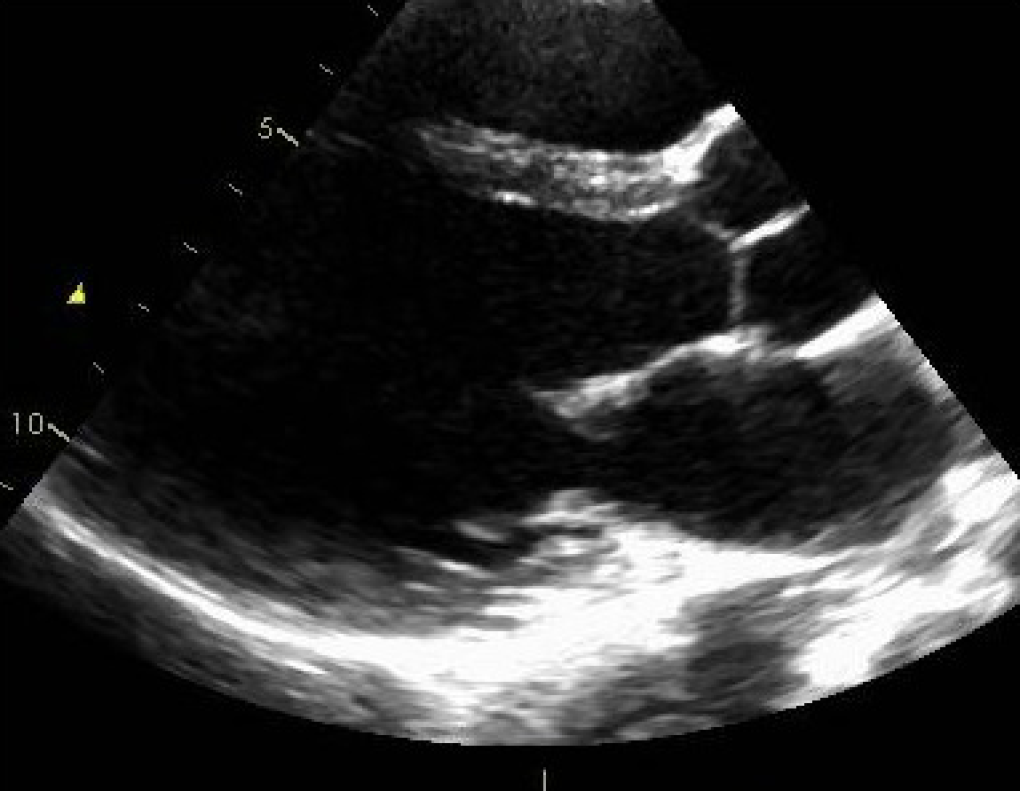Brains for Membranes
“Heart murmur” is probably one of the most common reasons for referral to the echo lab. Today’s case should remind you how important it is to carefully review the echocardiogram in such patients in order not to miss an unexpected pathology.
A 75-year old former shopkeeper was recently referred to our cardiac center to evaluate a mild systolic murmur, which was suspected to be new.
Just as a side-note: it is sometimes helpful if we as echocardiographers also use the “old fashioned” stethoscope. In our patient we were able to confirm a faint systolic murmur.
At, first glance no reason could be found for the murmur. The aortic valve was normal and the aortic Doppler signal was unremarkable with a velocity below 2m/sec. But was the Doppler signal really normal? Take a look at the “beard-shaped” spectrum. Since the image quality was superb, one would expect a much clearer delineation of the signal. In addition, the velocity was 1.9m/sec. Even though the velocity is below 2 m/sec and strictly speaking one cannot make the diagnosis of aortic stenosis, the velocity is more than one would suspect in a structurally normal valve (in the absence of a elevated cardiac output).
video platform video management video solutions video player 
Screening the outflow-tract carefully…
video platform video management video solutions video player video platform video management video solutions video player
… showed a discrete membrane and a muscular ridge resulting in insignificant left ventricular outflow tract (LVOT) obstruction.
Left ventricular outflow-tract-membranes or ridges are the most common manifestations of subvalvular aortic stenosis (70-80% in children). Other forms of LVOT pathologies include tunnel-like LVOT obstruction and anomalous mitral-valve tissue.
In the anatomic specimen or in 3D-echo images those membranes are crescent-shape. Depending on their size, they may cause variable degrees of subvalvular stenosis. It is not always easy to see such membranes, especially in elderly patients with poor image quality. If you are in doubt, perform a transesophageal study.
In our case the therapeutic consequences of the finding were nil. But it explained the systolic murmur. Usually velocities exceeding 1.6-1.8m/sec. can be heard. However, there are situations where misinterpretation can lead to unfavorable consequences. For example, in patients who also have some degree of valvular aortic stenosis. Replacement of the aortic valve will certainly not abolish the “outflow tract obstruction”. And why can’t the surgeon make the diagnosis? Because prosthetic valves are implanted by opening the aortic root, thus, the surgeon has difficulties to explore the outflow-tract.
More reasons for systolic and diastolic murmurs in young adults and the elderly are soon to come…
One more thing: we need your help - get free access to our course!
Your 123sonography Team
Recommended articles:
Where is Waldo (Part 1)?
A Missed Chance
Genesis

